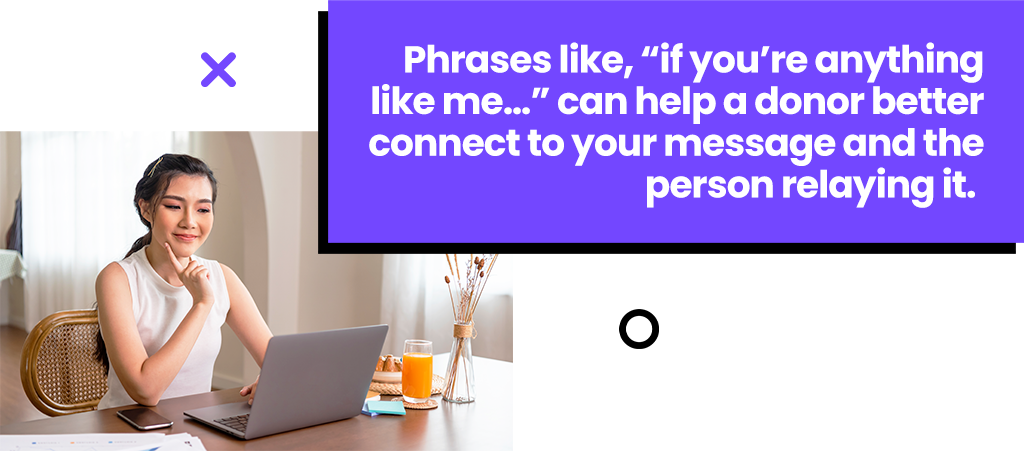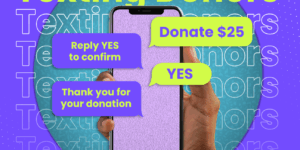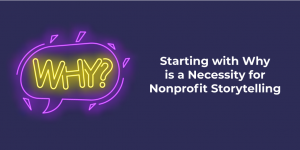True or False? An emotional story about your beneficiaries is the most effective way to approach your nonprofit’s appeal letter.
It’s false!
Now, we’re not saying that you should ditch your stories or how you play on the emotions of your donors. However, if you want to build stronger bonds with your donors, you need to use stories that appeal to their sense of donor identity.
How do donors see themselves?
Educational and religious institutions raise more money from individual donors every year than nonprofits in other sectors. This isn’t a coincidence.
It’s because the people who donate to these organizations strongly feel they are part of something bigger. Religious and educational nonprofits are primed for a donor-centric approach!
The days when entire towns basically shut down on Sunday mornings while everyone went to church may be gone. However, faith is considered extremely important to those who practice. It plays an important role in their daily lives and shapes how they see the world.
Academic institutions have a similar effect on people. As we learn, grow, and discover ourselves during the formative years of our lives, we develop a special connection with the place where it all happened. The year we graduate isn’t just a number. It’s an important part of our personal identity – a four-digit code representing that period of growth.
In both cases, the donor feels like they would not be the person they are today if it were not for the organization. The donor has a strong connection to these nonprofits, which is embedded into their identity.
They see themselves as living proof that the organization’s mission is being fulfilled. They feel a calling to make an investment, so others can benefit from the organization in the same ways they did.
READ MORE: How you can tell a more donor-centric story.

Shaping your stories.
Other nonprofits may not have such a natural way to tap into a donor’s sense of self. But you can create them through the stories you tell in your appeals.
You probably know it’s easier for donors to relate to a story about an individual rather than a group. That’s why you should focus on the impact one donor’s gift will make in one person’s life in your nonprofit’s appeal letter.
For example, let’s say you head development for an animal shelter. You need funds for your programs that help find a new home for rescued animals. Many of your donors are probably pet owners themselves. So, play on this part of their identity!
“Remember how peacefully your new family member slept the night after you adopted them from the animal rescue? Or how excited your kids were to meet their new four-legged friend? We need your help to make your experience a reality for other families who want to save an animal’s life.”
As you can see, we’re not abandoning the emotional approach. However, we’re not just appealing to emotion for the sake of it.
The example above can move naturally into the story of one family, whose lives changed because of their new pet. Or about one animal, who finally has a proper home and sleeps in a bed after spending months in a cage.
But first, you must tie that emotional connection to the donor’s personal identity.
This is the difference between sympathy and empathy. We’re striving for the latter. And tapping into a donor’s sense of self will help your supporters see themselves in another’s shoes.
READ MORE: The four principles of visual storytelling.

As always, keep it simple.
But if you want donors to make this connection and feel like they are part of something bigger, the other elements of your nonprofit’s appeal letter can’t distract donors from this core message.
As a fundraiser, you need to fight the urge to ramble about all the great things your organization is accomplishing. And when you do mention these accomplishments, you need to make it about what the donor has made possible, not what your organization has achieved.
So, don’t waste time at the beginning of your nonprofit’s appeal letter talking about everything your organization has done or will do. You need to make an emotional connection early to grab readers and ensure they are engaged as they read.
And you need to hold their attention by keeping things simple. Reading your nonprofit’s appeal letter shouldn’t feel like a chore. So, avoid cluttered or overly technical language.
Instead of phrases like “afford an opportunity,” “at the present time,” and “implement,” use “allow,” “now,” and “carry out.”
Simplifying these phrases and avoiding jargon will help keep your writing to a sixth grade reading level. This is the same principle journalists and marketers use to make complex topics more digestible for their audience.
READ MORE: Does your nonprofit make it easy to give?

The significance of the sender.
Have you considered how the sender of your nonprofit’s appeal letter can influence donors? Don’t just have your president or a board member put their signature at the bottom of the letter and leave it at that!
Instead, use the sender to further establish a donor’s identity. This goes far beyond a signature.
Ask yourself what the signee and the donor have in common regarding their identity. Then, use language that makes the connection clear for your audience.
Phrases like, “if you’re anything like me…” or “I also know what it’s like…” can help a donor better connect to your message and the person relaying it.
It’s like the old sales trick of nodding your head when asking a question to make someone more agreeable. Statements like this help the donor connect the dots.
The idea is to appeal to their sense of identity. It reveals shared experiences and gets the donor thinking: Yes, I know what that’s like! I want to help others like me!
For example, if your appeal deals with health-related items and you know some of your donors are doctors, use a fellow doctor as the sender! For others, use someone who can relate to the recipient as a patient or caregiver.
READ MORE: Using your nonprofit’s data to optimize email outreach.
Do more with your data.
You need a solid sense of who your donors are to apply these strategies in your nonprofit’s appeal letters.
But if you don’t have detailed demographic and psychographic information about your supporters, their motivations, and how they see themselves within your organization yet, that’s OK.
You can still start with a single trait that should be common among anyone supporting your organization. For example, in our animal rescue example earlier, the organization can infer that their donors care about animals and likely have their own pet.
However, learning more specific information about individuals or groups of donors can take your nonprofit’s appeal letter to the next level!
For example, if you knew what kinds of pets donors have, you could send versioned appeals that play off the donor’s identity as a cat, dog, bird, or reptile owner rather than the pet owner catch-all. But donors won’t come outright and tell you these details unless you ask them.
So, consider sending out a donor survey to get a better understanding of your audience. The stronger your data, the stronger your appeal:
- Strong: “Remember the day you brought home your new four-legged friend?”
- Stronger: “Remember the day you brought home your rescue dog?”
- Strongest “Remember the day you rescued Fido?”
As always, we recommend starting where you can and building up from there. So, try to learn more about your donors. Keep detailed records of how donors engage with communications. And track how well different messages perform on different appeals.
Then use what you learn to deliver an even more engaging experience the next time you send an appeal letter!


![[amplifi] - eBook pop ups and banners _Ask Strings (blog) FREE eBOOK: Ask strings and the science of securing support.](https://amplifinp.com/wp-content/uploads/2022/03/amplifi-eBook-pop-ups-and-banners-_Ask-Strings-blog.png)






